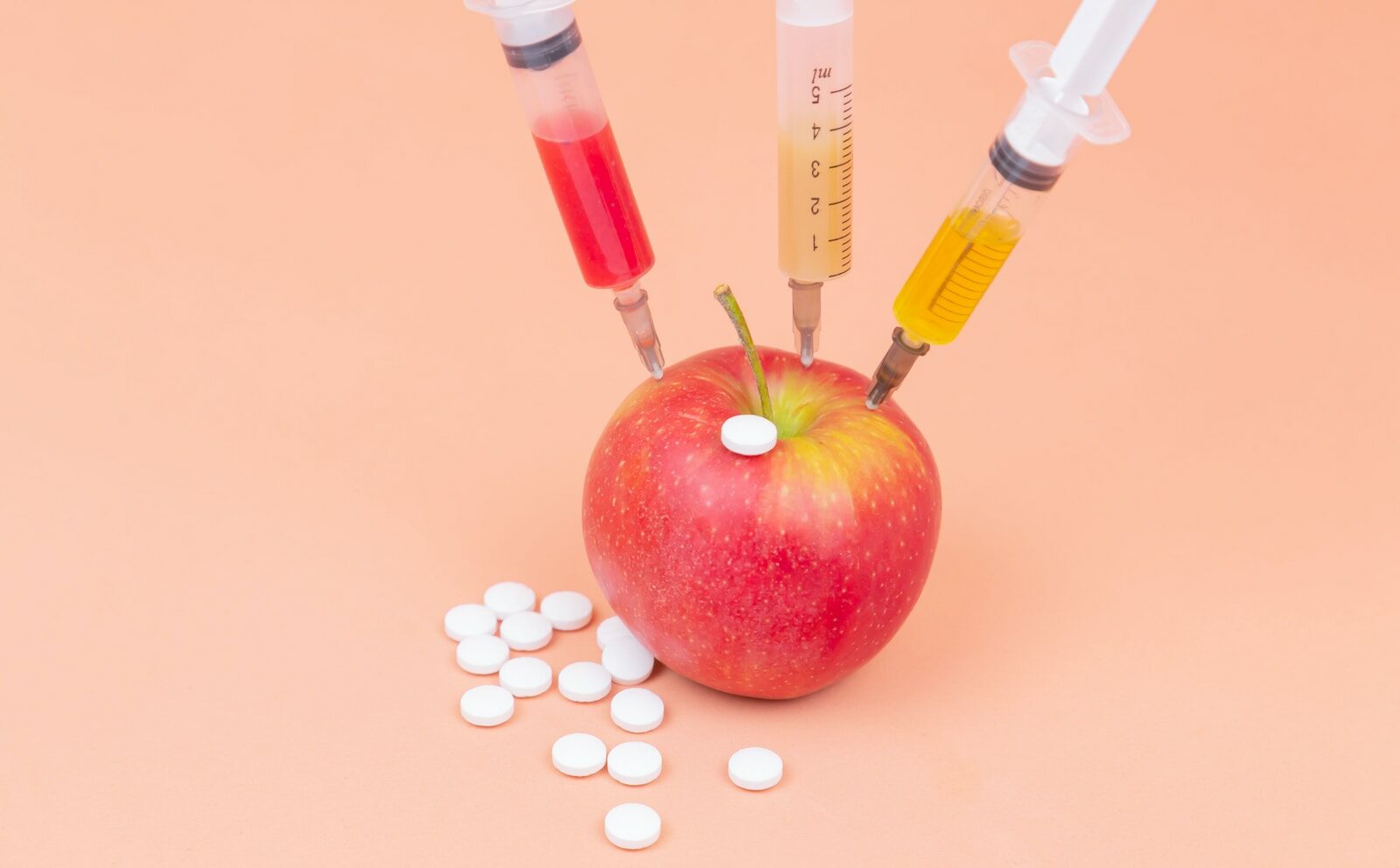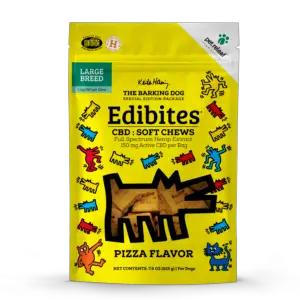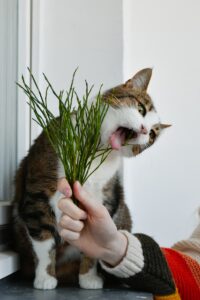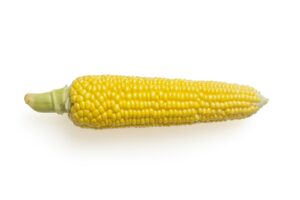
Key points
- A food allergy is a form of intolerance in which the immune system does not function normally and perceives harmless substances as dangerous;
- The most common signs of food allergies include skin changes, itching, vomiting, and diarrhea. The symptoms can occur suddenly, even in response to foods that the cat has tolerated for a long time without any problems;
- A food allergy can be triggered by any protein of animal or vegetable origin such as beef, chicken, soy, milk, dairy products, egg, fish, and lamb. But artificial additives such as preservatives, coloring, or fillers can also potentially cause allergies in pets;
- There is no cure for food allergies in cats, so if your pet is sensitive to one or several products, you should simply avoid giving them to the pet.
Food allergy in cats can occur very unpredictably. For example, your kitty’s favorite food that it has been eating every day for years might all of a sudden trigger an allergy. If your furry friend is suffering from a food allergy, there are a few things for you to consider. In this article, you will discover what you should do if you suspect that your pet has an allergy.
Table of Contents
Food Allergy vs. Food Intolerance
There are two types of reactions that may occur when a human or pet is insensitive to a certain product, namely allergy and intolerance. At first glance, they are very similar, which is why the two words are often used synonymously. However, the mechanisms of these two conditions are different: a food allergy in cats and dogs is characterized by a very specific immune response, while food intolerance is triggered by other physical processes. In addition, food intolerance does not require any prior sensitization.
What is a Food Allergy?
Feline food allergy refers to the body’s allergic immune-mediated reaction to a certain antigen found in food. Mostly these allergens are proteins, for example, those found in meat. The onset of cat food allergies usually occurs randomly, regardless of how long the cat has been eating the food in question.
Once a cat’s body decides that a foodborne protein is a hostile invader, it will attack it by producing large amounts of antibodies and inflammatory messengers.
An animal must have come into contact with the “allergen”, i.e., the triggering substance, at least once in its past for an allergic reaction to occur. This process is called sensitization.
The exact causes of food allergies in cats have not yet been adequately researched, and scientists don’t fully know how allergies ultimately develop. But it’s certain that these reactions have a genetic component to them. This means that certain breeds or animals from certain breeding lines are more likely to be affected than others. Also, food allergies are often related to atopy (inhalant allergies). And in many cases, cats will experience allergic reactions to both food ingredients and environmental allergens.
Which Foods Might be Problematic?
It is impossible to predict which food ingredients will trigger an allergy in a particular pet since it differs from animal to animal. However, some substances appear to be more likely to cause allergies than others. Thus, cats are often allergic to chicken, beef, and lamb, which are common ingredients found in many commercial cat foods. Some animals also react negatively to egg or soy protein.
Animals do not necessarily have to be allergic to just one component in their feed. However, it’s important to remember that cats can develop an allergy only to ingredients that they’ve already been exposed to in the past.
Below, you will find a list of the most common allergens in cat food:
Meat byproducts
Meat byproducts are used as fillers in cheap commercial pet food. Unscrupulous manufacturers add excess organs, tissue, and fats from cows, pigs, chickens, and other animals to their products. The quality of these byproducts is not controlled. So poor-quality ingredients might cause your pet to develop an allergic reaction to animal protein.
Dairy products
Despite the common belief, cats don’t tolerate dairy products in large quantities since they simply don’t produce enough enzymes to break down lactose contained in it. Lactose intolerance symptoms include diarrhea, vomiting, etc.
Artificial coloring
Artificial coloring is often used in pet foods to increase the product’s shelf appeal and, therefore, encourage customers to purchase. But dye used in this coloring can cause your cat to develop an allergic reaction.
Preservatives
To prevent fats and oils in pet foods from spoiling and becoming rancid, pet food manufacturers often add antioxidants such as BHA (butylated hydroxyanisole) and BHT (butylated hydroxytoluene) to pet food. Unfortunately, these chemicals are also linked to hives and food allergies in animals.
Seafood
Even though your cat might love eating seafood, it is a potent allergen that can cause various adverse reactions.
Corn products
Similar to meat byproducts, pet food producers use cornmeal as a filler in their products. However, corn can cause a severe allergy in many cats. Some symptoms of this reaction might include itchy, flaky skin.
Cat Food Allergy Symptoms
As a cat owner, you should pay close attention to your pet’s health and watch out for possible symptoms of food allergies in your kitty. These allergies typically manifest themselves through skin or gastrointestinal tract issues, but other symptoms might also occur.
Possible symptoms of a cat food allergy include:
- Diarrhea, vomiting, gas, and other gastrointestinal complaints;
- Skin reactions are usually associated with severe itching, redness, skin inflammation, and ulcers. Face, ears, belly, groin, armpits, and legs/paws are affected most often. With many of these conditions, a cat will lick the same spot over and over again, sometimes causing significant trauma and hair loss;
- Miliary dermatitis, which manifests itself in the form of small crusts spread out on the cat’s back;
- Recurrent ear infections;
- Respiratory problems, wheezing, snoring, coughing, sneezing, asthma;
- Runny eyes and nose;
- Paw chewing;
- Swollen paws;
- Weight loss;
- Excessive water retention (edema);
- Dull, brittle, or coarse fur;
- Stunted growth in young cats;
- Frequent bowel movements or strain during defecation.It is crucial to see a veterinarian if you observe any of these symptoms in your cat. As a first step, the vet will rule out other diseases and administer medication to alleviate acute symptoms. However, this is only the beginning. Next, the professional will diagnose the pet using an elimination diet. This is important because the only way to remedy the condition is to determine what exactly is causing it.
How are Food Allergies Diagnosed?
The diagnosis of food allergies in cats is performed using the so-called exclusion diagnosis during which all other diseases are excluded. To do this, the vet will thoroughly examine your cat and recommend further tests. For instance, they might use a flea comb, a skin scrape, or a biopsy to exclude parasites as a possible cause of itching. Alternatively, if the owner doesn’t give the cat routine preventive antiparasitic treatment, the vet will treat the animal specifically for internal and external parasites.
Fungal or bacterial skin infections also need to be ruled out. In addition, blood tests can be used to test the pet for metabolic diseases and deficiencies (e.g., a zinc deficiency can often cause skin changes). However, deficiencies usually only occur in pets that are fed a very low-nutrient diet since regular commercially available pet food has a balanced nutrient profile.
The final diagnosis is made using an exclusion diet for dogs and cats, also known as an elimination diet. While the animal is on a diet, it should eat only certain types of meat and grain that it has never eaten before. This diet has to last for at least eight weeks.
There are different forms of such trial diets:
- a hydrolyzed-protein diet where protein is broken down into tiny particles which the cat’s immune system cannot recognize;
- a new home-cooked diet that doesn’t contain any products included in your cat’s previous diet;
- A commercially available novel protein diet that doesn’t contain any products present in your cat’s regular diet.
It is vital that you only feed this food to your pet! A treat in between meals or a bowl of milk will ruin the experiment, and you will need to start over! Outdoor cats must be kept in the house while they are on an exclusion diet to prevent them from finding other sources of food.
If you do everything correctly, your cat’s allergy symptoms should go away or lessen in severity in six to eight weeks. But they will get worse again as soon as your pet eats the product it’s allergic to.
If the animal is doing significantly better over time, this is a sign that its old symptoms were caused by a food allergy. This hypothesis can then be proven conclusively by a provocation test during which the disease is triggered again by the suspected allergen.
Allergy tests for dogs and cats also exist, but they are not very informative when used alone. However, they can be a good instrument for tracking down food components that are not tolerated by the pet when used in combination with the diet.
Treatment for Food Allergies in Cats
An elimination diet can also be used as a part of therapy for non-allergy-related skin and gastrointestinal tract disorders. At the same time, vets may prescribe itch-relieving and anti-inflammatory drugs to give the animal at least temporary relief.
If the pet’s skin injuries have been infected with bacteria or fungi, these are treated with special shampoos and essential fatty acid supplements. In addition, it’s crucial to keep the animal from scratching. If the issue persists, it may be necessary to use antibiotics.
Once your vet has determined which products your pet is allergic to, you can start searching for suitable ready-made cat food formulated around a novel protein source. However, the transition to this new food should be very slow and cautious.
If you want to continue feeding your cat with home-cooked feed, you should ask your veterinarian to help you create a well-balanced menu. Homemade diets always need to be supplemented with minerals, vitamins, and essential amino acids!
You can also try hypoallergenic insect-based pet food manufactured by PetCan. Your pet will get a complete and well-formulated diet that doesn’t require any additional supplements with our insect-based cat food. Moreover, food created with insect protein is eco-friendly and good for the Earth.
FAQ
How do I know if my cat has a food allergy?
If your cat experiences an allergic reaction to some type of food, you might notice that it’s exhibiting symptoms such as itching, diarrhea, vomiting, ear infection, etc.
What is the most common food allergy in cats?
Cats most often become allergic to meat byproducts, corn, dairy, seafood, artificial coloring, and preservatives.
What food is good for cats with allergies?
If your cat develops a food allergy, you have to switch it to an entirely new diet that does not contain products present in the cat’s previous diet. Some pet owners consider home-cooked options, while others look for commercial products available on the market. You can also try ready-made hypoallergenic insect-based food manufactured by PetCan.








